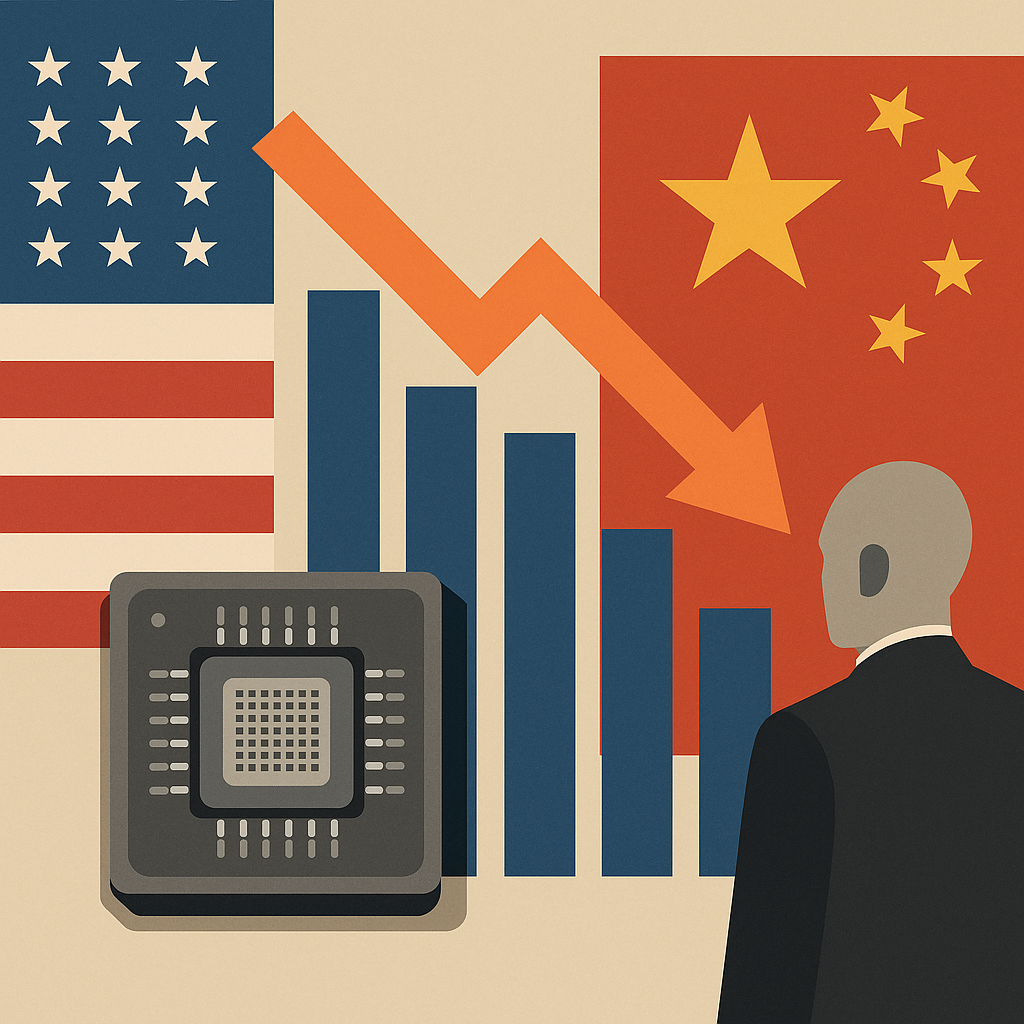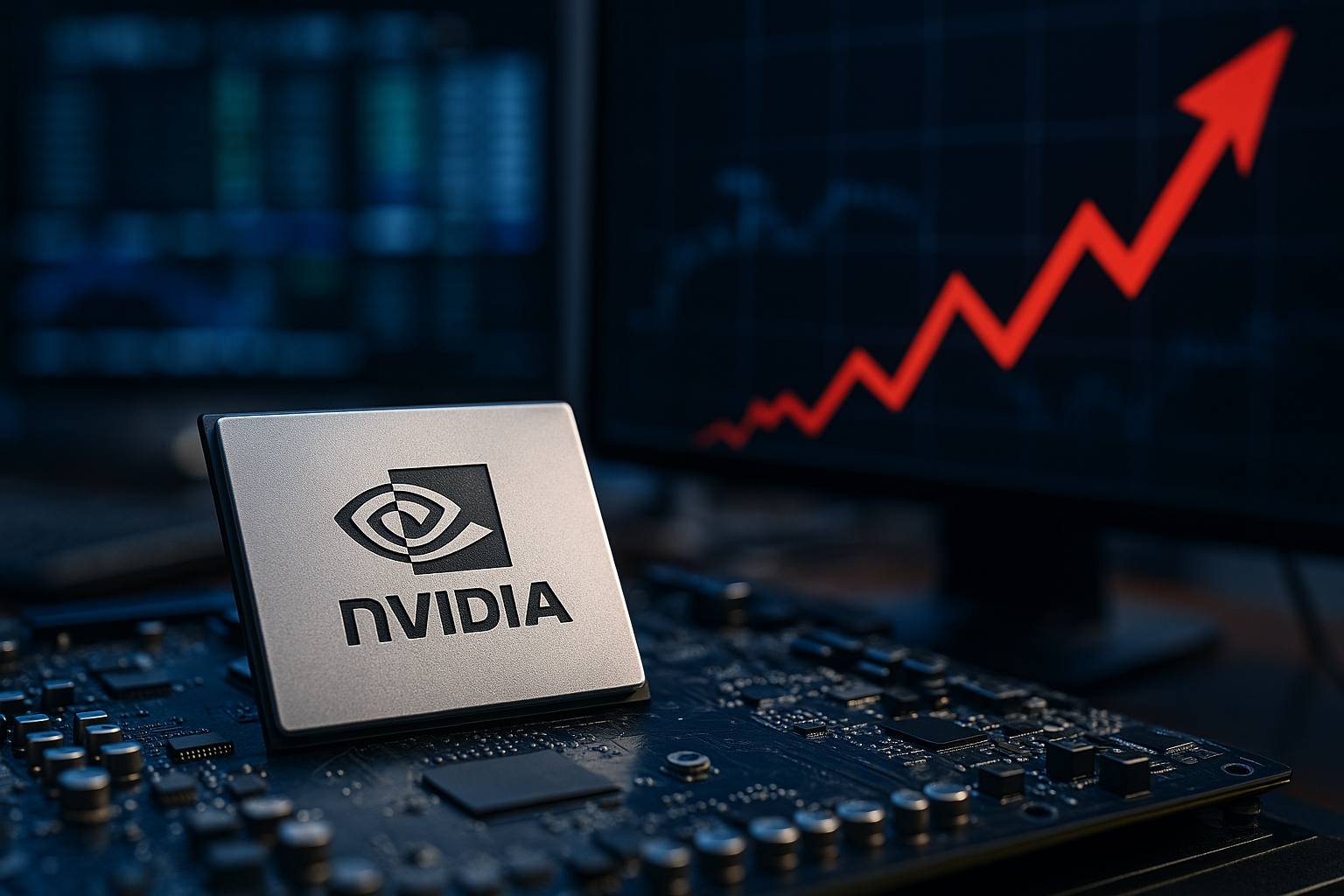Tensions at the intersection of technology and geopolitics intensified today as Nvidia (NASDAQ: NVDA) and Advanced Micro Devices (NASDAQ: AMD) agreed to pay the U.S. government 15% of all revenue from AI chip sales to China in exchange for export approvals. The agreement—first reported by The Wall Street Journal—marks a significant shift in how U.S. tech firms navigate regulatory barriers, and it immediately rattled equity markets in premarket trading. Nvidia shares were down 2.4%, AMD fell 1.9%, while Intel (NASDAQ: INTC) rose 1.6% as its CEO prepared for high-level talks at the White House.
The deal underscores a growing trend: U.S. policymakers are increasingly using trade approvals as leverage in the geopolitical race for AI dominance, a move with direct revenue implications for major chipmakers.
Why This Matters for Investors
Semiconductors sit at the core of nearly every emerging technology—from artificial intelligence to electric vehicles—and China represents one of the largest markets for advanced chips. By agreeing to a 15% revenue share, Nvidia and AMD are effectively conceding a chunk of their China earnings to maintain access to the market.
According to Investopedia, China accounted for 21% of Nvidia’s total revenue and 19% of AMD’s sales in 2024. Even a modest decline in net margins could have outsized effects given current high valuations in the semiconductor sector.
While the agreement averts an outright ban—something that could have cratered China-related sales—it sets a precedent for government-mandated revenue-sharing in other high-tech sectors. As The Economic Times noted, such policy frameworks could expand to quantum computing, green tech, and biotechnology if geopolitical pressures persist.
Regulatory Risk Meets Growth Potential
The U.S. government’s approach here highlights a new category of political risk: revenue-contingent export approvals. For chipmakers, this changes the calculus from a binary “sell or don’t sell” model to a “sell but share” framework.
Analysts at Wedbush Securities suggest this move could lead to an effective 3–5% drop in Nvidia’s annual EPS depending on Chinese demand trends. AMD may see slightly less impact due to its more diversified revenue base, but the symbolism is clear—political conditions now directly price into earnings potential.
Intel’s rally this morning is instructive. As a company with lower exposure to high-end AI chip exports to China, it may be viewed as a safer bet in the near term. That said, its upcoming White House meeting signals it may not be immune to similar arrangements.
Future Trends to Watch
- China’s Domestic Chip Push – Expect Beijing to double down on indigenous chip development. A surge in investment toward Chinese AI chip startups could erode long-term demand for U.S.-made semiconductors.
- Global Supply Chain Shifts – Multinationals may accelerate the diversification of manufacturing away from China to Southeast Asia, India, and Mexico.
- Sector Rotation – If political risk continues to weigh on semiconductor valuations, capital could rotate into less politically exposed tech sub-sectors such as cloud infrastructure or cybersecurity.
- Investor Sentiment on “Magnificent Seven” – Nvidia remains part of the tech-heavy concentration trade that dominates U.S. equity flows. Regulatory pressures could challenge that dominance if earnings growth slows.
Key Investment Insight
Investors should treat today’s development not as an isolated event, but as a marker of a new era in tech-trade relations. Exposure to companies heavily reliant on Chinese demand for AI chips now carries an embedded political-risk premium.
Potential Strategies:
- Diversify semiconductor holdings across companies with varied geographic revenue bases.
- Consider hedging positions in Nvidia and AMD with call options on suppliers less reliant on China.
- Keep an eye on alternative beneficiaries like Intel, which may see incremental gains from export policy headwinds facing competitors.
- Monitor policy announcements from both Washington and Beijing—incremental changes to export rules can move markets swiftly.
The Nvidia/AMD deal highlights a truth investors can’t ignore: in 2025, the semiconductor trade war is less about outright bans and more about strategic economic extraction. As the U.S. and China vie for AI supremacy, expect similar deals to emerge in other tech verticals.
Stay ahead of the curve with MoneyNews.Today, where we track the intersection of markets, technology, and geopolitics—delivering daily insights that keep your portfolio one step ahead.





